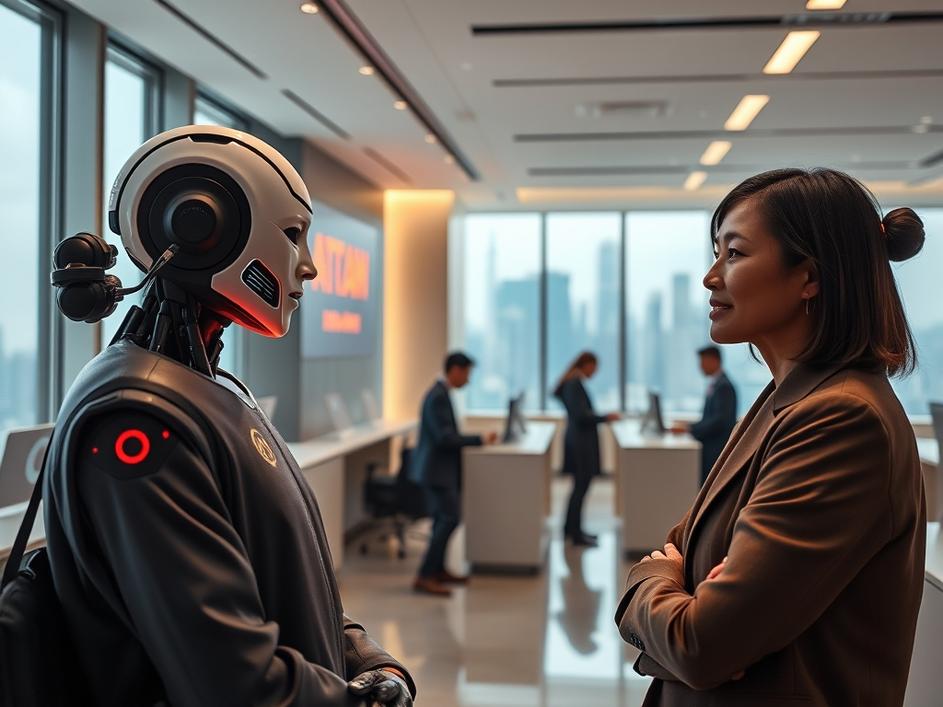


We are a digital agency helping businesses develop immersive, engaging, and user-focused web, app, and software solutions.
2310 Mira Vista Ave
Montrose, CA 91020
2500+ reviews based on client feedback

What's Included?
ToggleWe all see how much technology changes our daily lives. From how we order food to how we talk to friends, smart tech is everywhere. Now, it’s making bigger moves into places like banking. Imagine if your bank could understand your questions and help you out instantly, any time of day. Well, that future might be closer than you think, especially with what’s happening in Hong Kong. Recently, a company called CLPS Incorporation, which is pretty good at tech, teamed up with The Bank of East Asia, also known as BEA. Their goal? To test out a new artificial intelligence (AI) helper named “Nibot.” This isn’t just any test; it’s happening in a special place set up by the Hong Kong Monetary Authority (HKMA) called the GenA.I. Sandbox. It’s a bit like a high-tech lab where they can try out new ideas safely before they go live for everyone. This collaboration is a big step, showing how banks are seriously looking at AI to make things better for all of us.
So, what exactly is “Nibot”? While we don’t have all the tiny details, the name suggests it’s an intelligent bot, a kind of AI assistant. Think of it as a smart system designed to help with banking tasks. It could be there to answer your common questions quickly, guide you through a service, or even help bank staff with their daily work. The idea behind such a tool is to make banking smoother and faster. Instead of waiting for a human agent for simple things, Nibot might be able to step in and offer instant support. For banks, this means they can handle more requests without getting bogged down, and their human staff can focus on the more complicated or sensitive issues that truly need a person’s touch. This “Proof-of-Concept” is all about seeing if Nibot can really do what it’s supposed to in a real-world banking setup, making things more efficient and maybe even a bit easier for everyone who uses banking services.
Trying out new technology, especially something as powerful as AI in banking, needs a lot of care. This is where the HKMA’s GenA.I. Sandbox comes in. Think of a sandbox as a secure, controlled environment where companies can experiment with new products or services without all the usual rules and risks that apply to full-scale operations. It’s like having a special practice field before a big game. For AI, this is super important. It lets CLPS and BEA test Nibot, see how it behaves, if it’s reliable, and if it meets all the strict rules banks have to follow. The HKMA created this sandbox because they understand that to keep up with new tech, you have to let people try things. But they also want to make sure that these new ideas are safe and sound for customers and the financial system as a whole. It’s a smart way to encourage new ideas without putting everything at risk.
This experiment with Nibot is more than just a tech test; it’s a sign of where banking is headed. For customers, it could mean faster service, 24/7 help, and perhaps even more personalized advice down the line. Imagine getting quick answers about your account balance at 3 AM or having an AI help you understand a complex loan application. For banks, it means being able to serve more people more efficiently, saving costs, and letting their human teams focus on building deeper relationships or solving tough problems. But it also brings up important questions. How do we make sure AI is fair? How do we protect our private financial data? And what happens to jobs when AI takes over some tasks? This test in the sandbox is crucial because it helps us find answers to these questions in a low-risk setting. It’s about building trust and showing that AI can be a helpful tool in finance, not just a scary unknown. My take is that careful testing now means better, more secure, and more thoughtful AI services later. It’s about merging human wisdom with machine speed.
The team-up between CLPS and BEA is a classic example of how different industries are working together to innovate. CLPS brings the deep tech knowledge, the brains behind building and running advanced AI systems like Nibot. They know how to make the code work, how to train the AI, and how to integrate it into complex systems. On the other side, BEA brings the banking experience. They understand what customers need, what the rules are, and how a bank really operates day-to-day. You need both sides for something like this to succeed. Without the tech company, the bank wouldn’t have the AI. Without the bank, the tech company wouldn’t have a real-world place to test its ideas and see if they actually make sense for financial services. This collaboration shows that even established banks are ready to embrace new technologies, and they know that working with tech experts is often the best way to do it. It’s a powerful combination that could set a new standard.
If Nibot proves to be successful in this sandbox, the possibilities are huge. We could see banks offering even more tailored services, faster responses to customer needs, and more robust systems for things like catching fraud. AI could analyze massive amounts of data to give customers better financial insights or help banks make smarter decisions. But even with all this advanced tech, the human element will always be key. AI like Nibot is a tool; it helps people, but it doesn’t replace the need for human judgment, empathy, or complex problem-solving. The future of banking will likely be a mix: AI handling the routine and quick tasks, and human experts stepping in for the important conversations, big decisions, and building personal relationships. The challenge, and the opportunity, is to find that right balance where technology improves our lives without making them less human. This test is a step toward figuring out that balance in a very important industry.
The partnership between CLPS Incorporation and The Bank of East Asia, with their Nibot project in the HKMA’s GenA.I. Sandbox, is a clear signal. It tells us that the financial world is not just dabbling in AI; it’s getting serious about it. This isn’t about rushing into the future; it’s about carefully testing new ideas in a controlled environment. By doing so, they’re paving the way for banking services that are likely to be more efficient, more accessible, and potentially more personalized for all of us. It’s a thoughtful and important step towards a smarter financial future, one where technology and human needs work hand-in-hand to make managing our money easier and more secure. We should be watching these developments closely, as they will undoubtedly shape how we interact with our banks for years to come.



Leave a reply